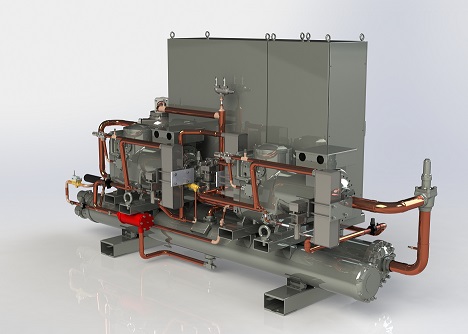Aquifer Thermal Energy Storage can store heat between seasons
A large building with a high heat demand might require a large number of boreholes to have sufficient capacity to exchange heat with a large volume of ground if ground source energy is to be used.
An alternative is to use an "open loop" Groundwater Heat Pump to heat buildings in winter (and to cool buildings in summer). In locations where water is easily accessible it can be advantageous to use open water as a "heat source" (and save the cost of drilling many boreholes into the ground). The heat pump will have access to a relatively constant water temperature so the performance will not fall significantly as large amounts of heat are extracted if the water source is large. However, where the water source is large there is no opportunity to use that water as a controlled thermal energy store.

If the heat exchange is with an underground aquifer of limited size then extracting heat in winter will lower the temperature of the water in the aquifer. The benefit comes in the summer when cooling is required and this can be performed more efficiently if the water temperature is lower at the start of the cooling season.
As the summer progresses and heat is transferred to the aquifer its temperature will increase. This higher temperature can then provide a more efficient heat source for the building in winter.
There is scope for clever design therefore to use the aquifer as a thermal energy store in the same way as the ground can be used in Borehole Thermal Energy Storage.
However, great care will be needed if a balanced thermal energy store is the objective. The level of water flow and the extent of the aquifer may not be known accurately until the boreholes have been drilled and the thermal properties have been tested. The local geology may provide some surprises when the drilling begins.
London Chalk Aquifer
The London Aquifer underlies a large area of central London. For larger buildings this permits access to a very large body of water at a more or less constant temperature throughout the year. This is ideal for buildings needing heating by heat pumps or by heat networks which may be able to receive grants from the Heat Networks Investment Project for installing a fifth generation district heating network.
See also: Balanced Energy Networks
See also: Renewable Heat
See also: Renewable Heat Incentive clean energy cashback for most of your running costs for over 20 years.
See also: Banking on IHT
See also: Energy Storage
See also: Water Source Heat Pump
See also: Water Source Heat Map



